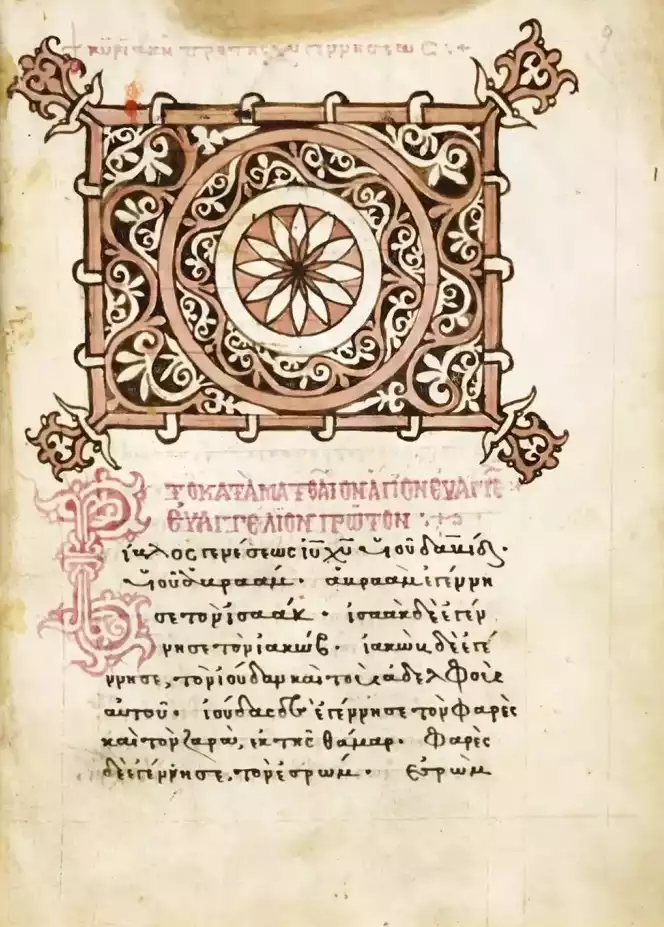
The Gospel of Matthew, a cornerstone of Christian scripture, is traditionally attributed to Matthew the Apostle, a former tax collector turned disciple of Jesus Christ. While the precise dates of its composition remain debated, scholars generally agree that it was written between 80 and 90 AD. Unlike other synoptic gospels, Matthew uniquely intertwines Jesus’ teachings with Jewish tradition, affirming Jesus as the long-awaited Messiah.
Historical Context and Authorship
The Gospel of Matthew occupies a special place in the Christian canon, esteemed for its rich historical and theological insights. Its authorship, traditionally ascribed to Matthew, reflects a deep understanding of Jewish customs and scriptures. This gospel serves as a bridge between the Old and New Testaments, emphasizing Jesus Christ’s fulfillment of Old Testament prophecies.
Matthew’s narrative begins with a genealogy tracing Jesus’ lineage back to Abraham, establishing His Jewish heritage and divine mission. This genealogical account not only anchors Jesus within Jewish history but also underscores the universality of His message, foreshadowing the gospel’s appeal to both Jewish and Gentile audiences.
The historical context of this gospel is pivotal, emerging at a time when the early Christian community was defining its identity in relation to Judaism. Matthew’s audience, primarily Jewish Christians, faced the challenge of reconciling their Jewish heritage with their faith in Jesus as the Messiah. The gospel addresses this tension, portraying Jesus as the fulfillment of the Law and the Prophets, thereby offering a new interpretive framework for understanding their religious roots.
Throughout its narrative, the Gospel of Matthew meticulously interweaves Jesus’ teachings with Jewish law and prophecy. This synthesis is evident in the Sermon on the Mount, where Jesus reinterprets the Mosaic Law, offering a more profound, spiritually-focused understanding. This recontextualization of Jewish tradition underscores the gospel’s central theme: Jesus as the fulfillment of Jewish hopes and the inaugurator of a new covenant.
In essence, the Gospel of Matthew serves as a theological bridge, connecting the Jewish past with the Christian present, and laying a foundation for the future expansion of the Christian faith. Its historical and theological richness continues to inspire and guide believers in their spiritual journey, reaffirming the enduring relevance of its message.
Theological Significance and Interpretation
The Gospel of Matthew not only documents the life and teachings of Jesus but also offers a profound theological perspective. It presents Jesus as the embodiment of God’s promises, fulfilling the Old Testament prophecies and establishing a new covenant with humanity. This gospel emphasizes Jesus’ role as the Messiah and highlights His teachings, particularly on the Kingdom of Heaven, as central to Christian belief.
Matthew’s account of Jesus’ birth, ministry, death, and resurrection is intertwined with theological reflections, making it a crucial text for understanding early Christian thought. The Beatitudes, the Lord’s Prayer, and the parables are among its most significant contributions, offering insights into the ethical and spiritual dimensions of Christian life.
The gospel’s portrayal of Jesus’ miracles and teachings underscores His authority and divine nature. These narratives demonstrate His power over nature, illness, and even death, affirming His identity as the Son of God. Moreover, Matthew’s emphasis on Jesus’ fulfillment of prophecy establishes Him as the long-awaited Messiah, bridging the gap between Jewish expectation and Christian realization.
The Gospel of Matthew stands as a testament to the life and teachings of Jesus Christ. It serves as a vital link between the Jewish tradition and the Christian faith, portraying Jesus as the fulfillment of ancient prophecies. Through its historical narrative and theological depth, this gospel continues to shape Christian understanding and practice, affirming Jesus’ enduring significance as the Messiah.
References
- France, R.T. “The Gospel of Matthew.” New International Commentary on the New Testament. Grand Rapids, MI: Eerdmans, 2007.
- Gundry, Robert H. “Matthew: A Commentary on His Handbook for a Mixed Church under Persecution.” Grand Rapids, MI: Eerdmans, 1994.
- Keener, Craig S. “A Commentary on the Gospel of Matthew.” Grand Rapids, MI: Eerdmans, 1999.
- Luz, Ulrich. “Matthew 1-7: A Commentary.” Minneapolis: Fortress Press, 2007.
